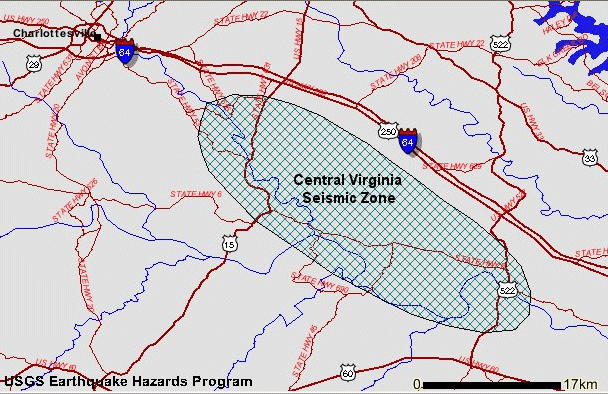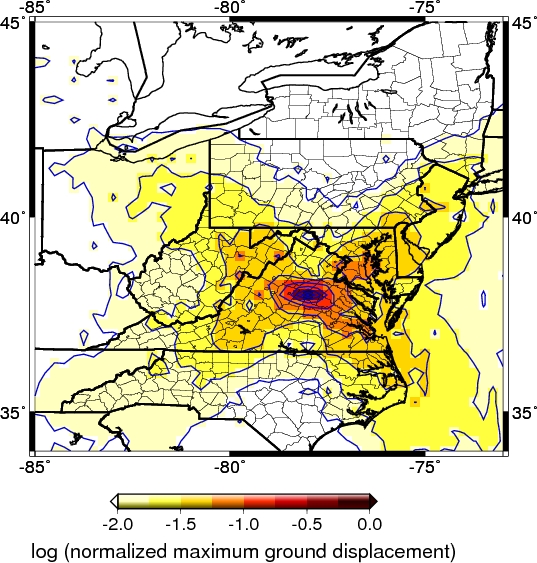Central Virginia Seismic Zone
|
Large earthquakes in eastern North America share characteristics with those of central North America. Most of them occur at sites of ancient rift valleys lack of significant recent faults. The most recent rift system developed about 200 million years ago as Pangaea was torn apart. Some rift arms succeeded, combining to create today's Atlantic Ocean basin. Other rift arms failed and left behind as weakened zones within continents. |
 Central Virginia Seismic Zone (USGS) |
Links
- USGS Earthquake Hazards Program - Virginia
- National Earthquake Information Center (NEIC)
- Earthquakes in Virginia and Vicinity 1774 - 2004
- Virginia Tech Seismological Observatory
- Virginia's Largest Earthquakes (including the Giles County Earthquake of May 31, 1897)

